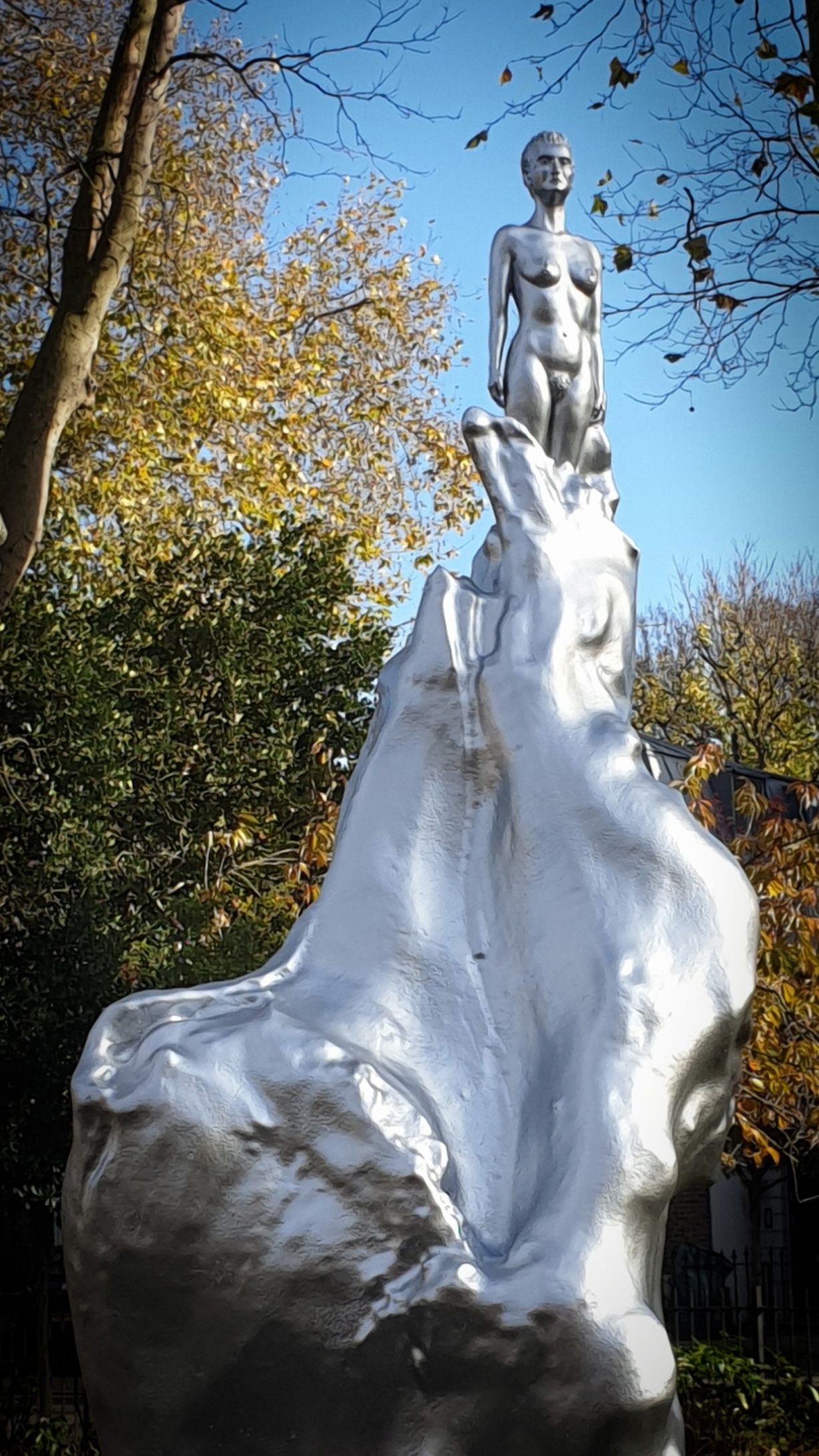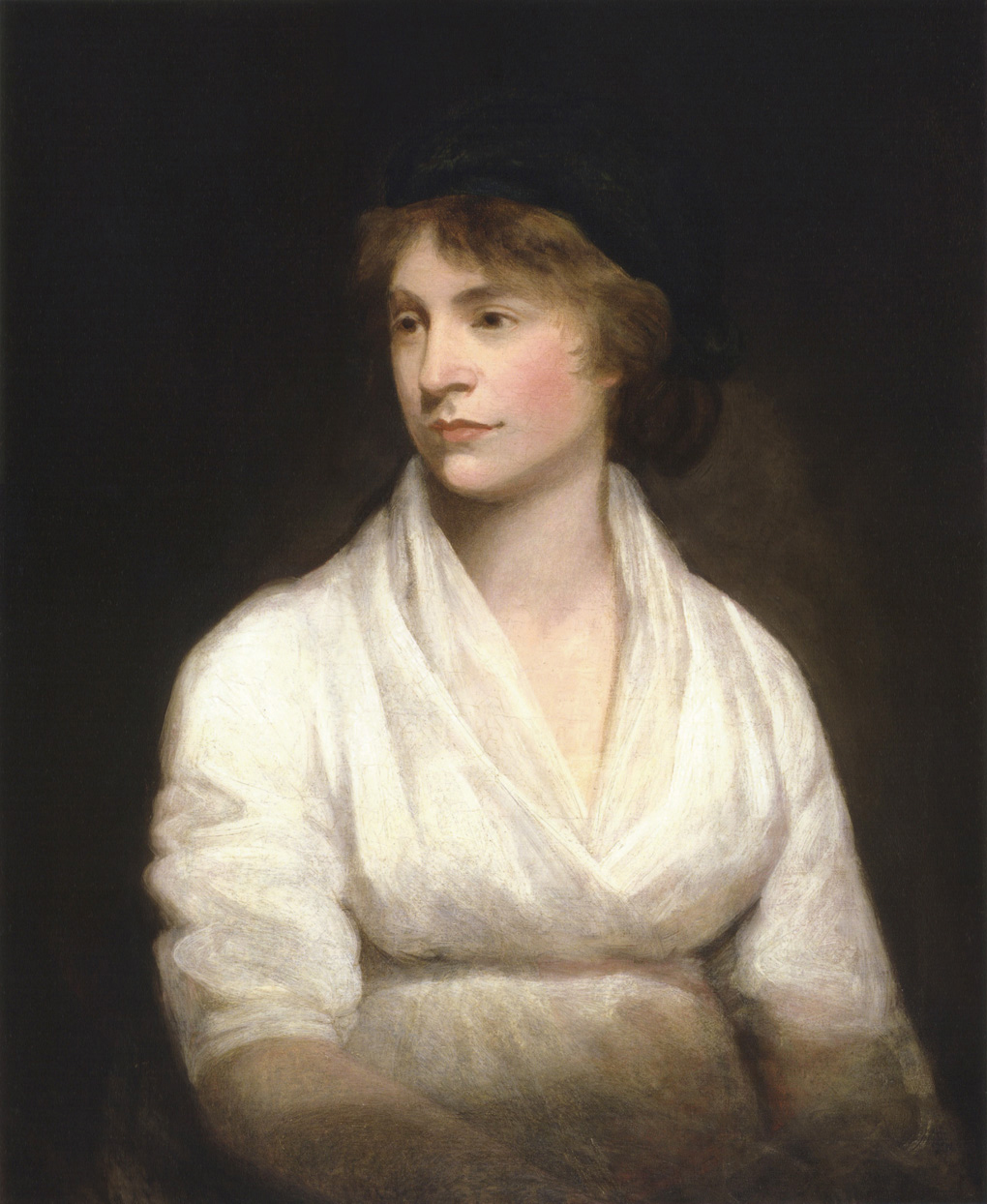A monument to one of the eighteenth century’s most prominent feminist thinkers has finally been unveiled – and it’s not gone down well

On Tuesday, after a ten-year campaign, a statue commemorating Mary Wollstonecraft, one of the eighteenth century’s most prominent feminist thinkers, was finally unveiled on Newington Green in North London, where she established a boarding school for girls. It has not gone down well.
Maggi Hambling’s statue, an undulating silver column that peaks with a small figure of a naked woman, has already sparked numerous disappointed comment pieces, and a barrage of angry tweets. Though this is hardly Hambling’s first memorial sculpture to provoke strong feelings (her 1998 tribute to Oscar Wilde featuring the writer’s haunted, sinewy face melting into a granite sarcophagus was exactly as unpopular as you could expect such an object to be).
This week’s outpouring of feeling is the kind of response that can only be prompted by a public piece of art. Public statuary invites commentary simply by virtue of it occupying our shared space, and because it is so difficult to get right, needing to somehow represent the interests of the artist, the commissioner, the local powers that be, the subject themselves and ‘the general public’, whoever they are.
Lockdown-related boredom has probably meant that more people than usual are agitated by this one, though. Outside of a global pandemic, it feels unlikely that I could have visited Newington Green at 2:30 in the afternoon, as I did on Wednesday, and found a crowd of about fifty people enraged about a new commemorative statue. The opinion on the ground was unilaterally negative.

Photo: Chris Boland www.chrisboland.com
People I spoke to described the statue as disappointing, confusing, controversial for the wrong reasons, a missed opportunity. I overheard one person describing it as ‘fascist’ but they walked off before I could ask them to expand. Mostly, people were just nonplussed by the fact that a slim, elfin figure, described by Hambling as an “everywoman”, was supposed to represent a tribute to one very particular woman in a particular historical context, Mary Wollstonecraft.
While nothing like as numerous as their male equivalents, I can still think of plenty of statues recognising great women that are not creepy little nudes. Mary Seacole outside St Thomas’s Hospital, Millicent Fawcett in Parliament Square, that Swedish statue of the woman whacking Nazis with her handbag: lots of lifelike, bronze figures, in different poses, but fundamentally similar.
So you can see why Hambling wanted to do something a little more daring. But even if we take it on its own terms, and accept that a naked woman stood atop a spume of “organic matter” was the right way to go, it’s still a bewildering object. The silvery material has an oddly cheap look to it, and its awkward, off-centre positioning on the Green lends it the air of a re-coagulating-Terminator-as-scarecrow. It’s weird, and it’s not clear what that weirdness serves.

I don’t think it constitutes an offence to feminism that the statue includes a naked figure, and giving that figure its modesty back by covering it with some duct tape and a face mask, as some of its detractors did this week, seems like an odd way to spend one’s time. The nudity just doesn’t feel especially appropriate, tonally speaking. It invites the viewer to consider Mary Wollstonecraft and the mons pubis in the same thought, and it would be difficult to argue that this is an unalloyed good.
There is, unfortunately, just something inherently funny about a sour-faced sprite with her boobs out. And so I wonder whether those who were involved in the long campaign to create a monument to Wollstonecraft feel sadness, that an influential feminist thinker is now associated with a joke, and an expensive one at that.
I would like to live in a world in which attempts at originality in public statuary are made, if we think that public statues are even required at all. Part of that will involve people getting it wrong, and alienating at least some of the general public that the statue is supposed to be for. It does, however, seem avoidable to get it wrong quite this badly.